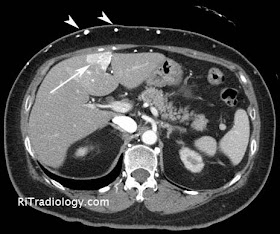Facts:
- Common pediatric elbow fracture (3rd common, after supracondylar and lateral condylar fractures)
- Valgus strain at elbow joint
- Two main types: simple avulsion (1/2) and fracture-dislocation (occurring with lateral elbow dislocation; 1/2)
- Indications for surgery include 1) displaced fragment trapped in joint preventing reduction, 2) ulnar neuropathy, 3) valgus instability, 4) open fracture
Imaging:
- Look for displaced fragment trapped in the joint and degree of displacement because they might indicate surgery
- In patients less than 8 years, trochlea may be non-ossified and this may be confused with fracture of medial condyle, which is rarer and could be more complicated
- Another imaging Ddx is osteochondrosis
Wilson JN. The treatment of fractures of the medial epicondyle of the humerus. J Bone J Surg 1960;42:778.
Gottschalk HP, Eisner E, Hosalkar HS. Medial epicondyle fracture sin the pediatric population. J Am Acad Orthop Surgeons 2012; 20:223.
Wheeless' Textbook of Orthopedics link


































